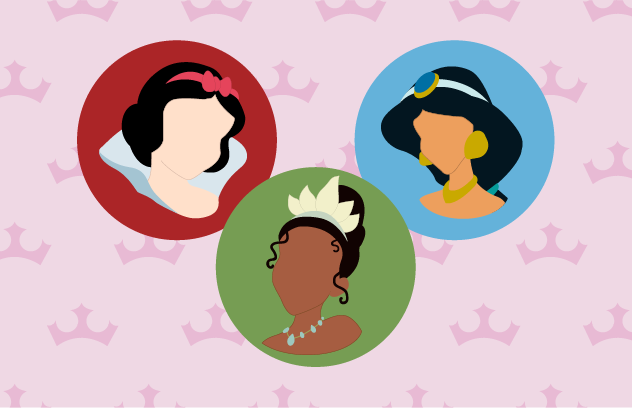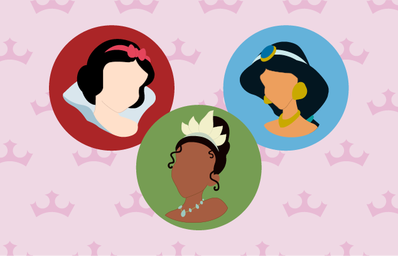At some point when you were five, your mother probably played your favorite Disney film to keep you occupied while she got busy with work. And it worked — you were mesmerized by the enchanting princesses. Your eyes probably glazed over the latest princess edition of the Barbie dolls collection that would be released, one after the other. Or maybe you tried to emulate a Disney princess’s beauty by buying costumes and playing dress-up.
These classics played a big part in defining many of our younger days; however, after re-visiting these childhood favourites again years later, I became more dissatisfied with the vision I had painted for myself through Disney films. In fact, major productions like Aladdin, Snow White and the Seven Dwarves and The Princess and the Frog changed how I viewed Disney. Let’s go over them below.
Aladdin
Aladdin started it all. As a South Asian who has lived in the UAE, I will say the production simply did not portray an accurate representation of the characters. Both in the first-ever Aladdin animation released 25 years ago and in the live-action remake, it just simply wasn’t it. Aladdin‘s representation of Middle Eastern identities is compromised when aspects of Indian culture are mixed with Arabian culture. This conflates the diverse Eastern cultures into one and is indicative of the company’s tendency to uphold inaccurate representations of diverse racial and ethnic identities. In my opinion, Aladdin is not a fairy tale — it is more like a white man’s colonial fantasy that perpetuates orientalist stereotypes of the Middle East and Asia.
This overhyped Disney film continues to narrowly represent Middle Eastern culture and identity with the following stereotypes. One: the savage-like, barbaric commoners. A primitive society is depicted with big noses, sinister eyes, heavy accents and constant sword-wielding; in one scene, a woman’s hand is cut off for stealing an apple for a hungry child. Two: wealthy but incompetent leaders or Sheikhs, with the Sultan as a prime example. The Sultan is of darker complexion and has a beard; he doesn’t know anything about politics and governance, is flush with money and has a lot of toys to play with. Three: a dark-skinned, perverted villain named Jafar. Also of dark complexion, he has under eye circles, a hooked nose and a black beard. A cunning manipulator, he also has a harem of sex slaves. Last but not least: women of the East in a hypersexualized light and subordinate to the hands of men, such as the female protagonist, Princess Jasmine.
For women of colour like myself, the popular title is not a “fairytale” per se, but a canvas on which the archetype of white colonial fantasies, Princess Jasmine, is crafted; she indicates virtually no signs of royalty but projects a deep sexual relevance, which differs from all the previous white princesses who wore dresses that bury their figures. A majority of the movie features Princess Jasmine in sexually explicit clothing. Her depiction in Aladdin exaggerates the physical maturity and sexuality of young girls; it fosters an implicit message for women of colour having to be overtly sexual and dressing provocatively to appear royal.
From my observation, this is not the standard for white princesses as they can wear dresses and still assume the role of a beautiful princess; therefore, Aladdin casts young women of colour at a status lower than young white women. It just seems like women of colour are violable objects, “the other”, exotic creatures — and much less a princess in this Disney’s fairytale.
Snow White and the Seven Dwarfs
Grab your coffee and safe-to-eat red apples, because we are going to dissect just how potentially racist the much-beloved Disney movie Snow White and the Seven Dwarves really was. Since the animation’s release in 1937, Disney has grown from a film studio to a multinational media conglomerate and, for better or worse, contributed to the discourse of affiliating beauty and innate goodness with paleness and “whiteness.”
By looking at the setting of the tale, we can see that there is a representation of stereotypical colour symbolism present. A study done by Yael Chapman at McGill University points out that our antagonist, the wicked witch, is accompanied by black cats and lives in a dark-coloured castle encircled by a dangerous black forest; whereas the male protagonist, the Prince, lives in a white castle, is accompanied by a majestic white horse and simultaneously in love with the “*fairest* of them all.”
In addition, we must not overlook the eurocentric language present in the classic version of the film. As I mentioned above, Snow White is famously described as the “fairest of all,” with “lips red as a rose, skin pale as snow and hair that is as dark as ebony.” Her physical trait of paleness is shown to correlate with her innate goodness and innocence, relative to her guardian, the (innately) dark and evil witch. Think about it: one of the most cherished kids’ fairytales has a recurrent theme of “fairness” equating to the concept of innate goodness and beauty throughout it. To me, using and placing high emphasis on one particular word that means both white-skinned and beautiful endorses ideologies of “white supremacy” and Western beauty standards.
To make matters worse, we must consider the public’s recent reaction to the casting of Colombian-American Rachel Zegler as the title character in Disney’s live-action remake of Snow White and the Seven Dwarfs. Many critics online are infuriated by her being cast because Zegler is simply not ‘white’ enough to play Snow White.
The Princess and the Frog
Last and definitely not least is The Princess and the Frog. In 2009, the Walt Disney company debuted a Black princess in the Disney pantheon of princesses, Tiana — to much anticipation and equal antagonism; however, the tale is, once again, narrowly constructed upon racial and class stereotypes, in my opinion. There is a lot of emphasis on the Black princess being portrayed as an amphibian and her low-class status in the film, which frankly does not give off a fairytale vibe.
A study by Lauren Dundes and Madeline Streiff points out that Princess Tiana is left out from a traditional fairytale because of her race — highlighting how Tiana, the first Black Disney princess, was portrayed as a frog for two-thirds of the movie, equating her identity with animalistic traits. For women of colour, especially those who are Black, this portrayal can be viewed as regressive if not outright outrageous.
Disney marketed this movie as if it were a groundbreaking and progressive movie by introducing a Black princess, but it builds upon the existing racial stereotypes of the Black community. Make it make sense, Disney. In The Princess and the Frog, Tiana and her mother are presented within the same narrow scope of historical representations of Black womanhood, with a heavy emphasis on socioeconomics. Her aspirations of opening a restaurant are arguably so mundane compared to other Disney princesses’ dreams — it lacks the magical setting in which Disney fairytales feature white princesses and simply ties the first Black Disney princess to tedious labour work. Where is the classic bippity-boppity scene that we got for Cinderella? It is clear to me that Princess Tiana’s lower socio-economic status is equated with her race, because there is no other identifiable reason why she has that many hardships in life.
All in all, Disney constructs a portrayal of women of colour that re-establishes prejudices and social norms with The Princess and the Frog, which significantly affects children. The tale projects a future filled with sacrifices and economic despair for children of colour; seeing that Tiana is class-subordinate to white princesses and does not live a life of leisure and luck may develop a sense of apprehension, rather than instilling fantastical hope for the near future.
As of right now, Disney Plus is one of several streaming platforms to include disclaimers before films with racist stereotypes. My opinion, though? The fact that Disney is brushing these issues under the rug implies they’d rather close their eyes and ignore their past wrongdoings than learn, grow and evolve from them. Rather than displaying disclaimers, which is performative, Disney should rectify the narrative it has produced about the existing princesses of colour by creating newer and corrected versions, and expand the list of princesses of colour with a righteous depiction, of course.


